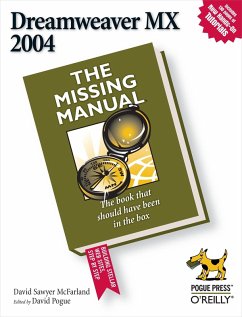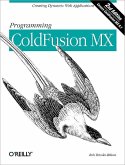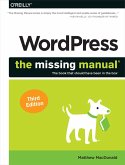Macromedia's Dreamweaver MX 2004 offers a rich environment for building professional web sites, with drag-and-drop simplicity, clean HTML code, and dynamic database-driven web site creation tools. It comes with everything except perhaps the most important feature of all: a printed manual.Enter Dreamweaver MX 2004: The Missing Manual, the book that enables both first-time and experienced web designers to bring stunning, interactive web sites to life. What sets this new edition apart is the crystal-clear writing, welcome humor, and exclusive features like these:Live examples. With a step-by-step annotated tutorial, readers follow the construction of a state-of-the-art commercial web site, complete with Flash buttons, Cascading Style Sheets, and dynamic databases.Tricks of the trade. The book is bursting with undocumented workarounds and shortcuts.Design guidance. Readers can create any modern web feature, including forms, animations, pop-up windows, and more. This book lets you know which browsers, situations, and audiences are appropriate for each.With over 500 illustrations, a handcrafted index, and the clarity of thought that has made bestsellers of every Missing Manual to date, this edition is the ultimate atlas for Dreamweaver MX 2004.
Dieser Download kann aus rechtlichen Gründen nur mit Rechnungsadresse in A, B, BG, CY, CZ, D, DK, EW, E, FIN, F, GR, HR, H, IRL, I, LT, L, LR, M, NL, PL, P, R, S, SLO, SK ausgeliefert werden.









